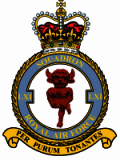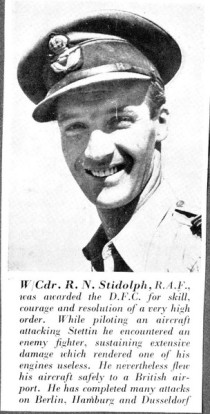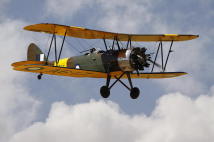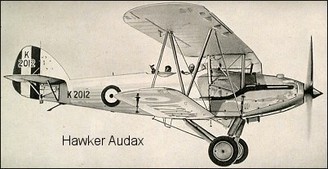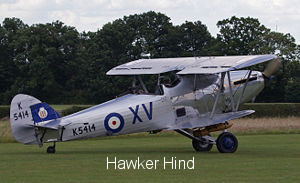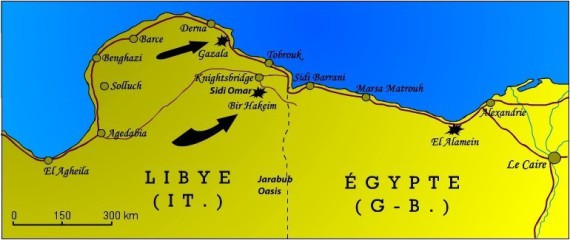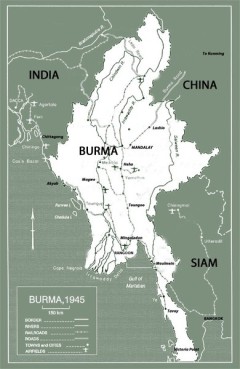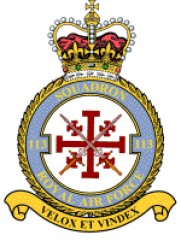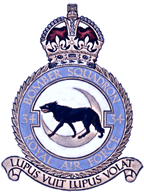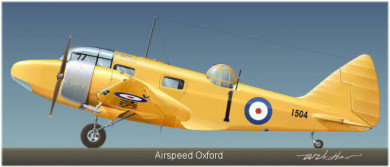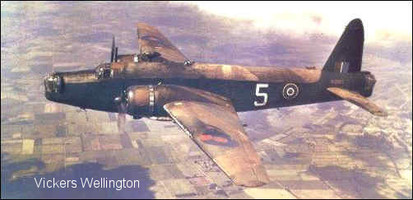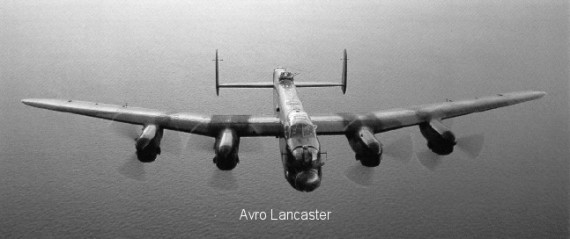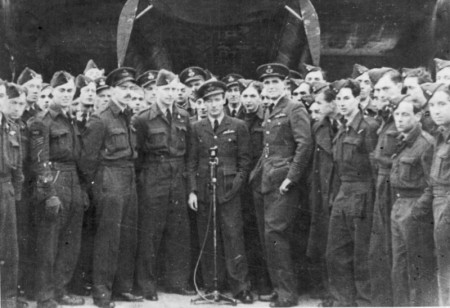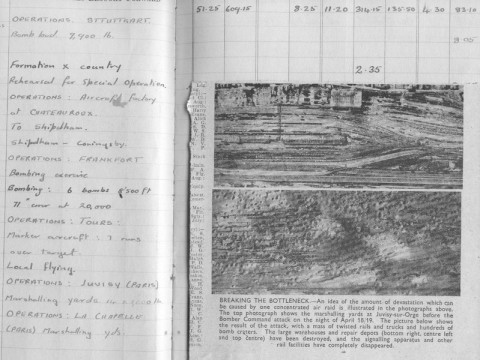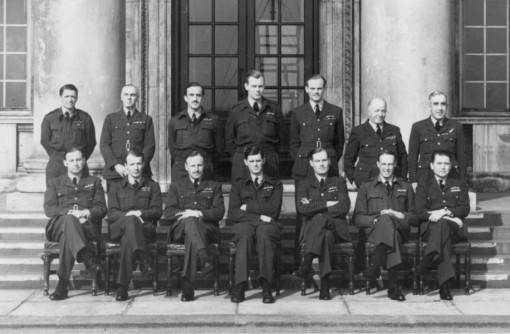W/CDR R N STIDOLPH DFC
O.C. 61 Squadron September 1943- June 1944
Reginald Neville Stidolph was born on 3rd August 1915 in Salisbury, Rhodesia, the son of Alan and Josephine Stidolph. He was educated at Avondale junior School, and Chaplin and Plumtree senior schools. His mother, grandparents and great grandparents were of pioneering stock, travelling the six month journey by ox wagon from South Africa to early Rhodesia in 1892 on the Moodie Trek.
Family lore was that Reg wanted to be a pilot from the age of 10, and that he was awarded a scholarship to Cranwell to join the RAF. However, he was unable to take it up as his father opposed it and wanted him to have a “steady job” in the Civil Service. He worked in Customs Service for a short while but hated it and went to UK to join the RAF anyway, commencing at the age of 20 in November 1935.
His record of service below has been gleaned by his son Patrick from five of his six flying log books. One log book, from July 1962 to May 1966, is missing.
Highlights of his service are:
- He completed 23,817 hours of flying over more than 41 years, including over 20,000 hours in command, being awarded a Master Pilots Certificate.
- He flew 48 types of aircraft for eight organisations on three continents in 44 countries. He has landed on over 350 different airfields.
- He attained the rank of Wing Commander in the RAF and was awarded the DFC. He flew 60 operations during the war in Germany, Burma and the Middle East.
Of relevance to this website is his service from September 1943 to June 1944 when was posted as Wing Commander to command No 61 (Heavy Bomber) Squadron.
1 ROYAL AIR FORCE 1935 to 1946
|
Date of commission: 29 Nov 1935 Date qualified for wings: 22 April 1936 Date demobilised: 26 June 1946 War Service Number: 37501 Highest rank: Wing Commander Decorations awarded: DFC Hours flown Day 1,358 hours Night 245 hours
|
In December 1937 he was posted to RAF Calshot, a Naval air station in Hampshire, for a floatplane conversion course followed by training at Gosport, near Portsmouth, from Jan to April 1938 on Swordfish float and landplane aircraft. In May 1938 he went to No 822 (T.S.A) Squadron, “B” flight, at Donibristle in Scotland, for 4 more months of seaplane training on Swordfish. This training, as a specialist in torpedo work with seaplanes, included torpedo attacks, dive bombing and a total of 35 deck landings (on HMS Stronghold). On completion, he was promoted to Flying Officer.
The period September-October 1938 was spent with Fleet Air Arm at Gosport, flying Shark, Tutor, Magister, Osprey and Avro 504 aircraft. From the end of October 1938 to January 1939, he was attached to Cooperation Flight at Mount Batten, Plymouth, as Flying Officer in command, providing air experience for Royal Navy officers. In Feb 1939, he was posted to 811 (Torpedo Spotter Reconnaissance) Squadron on HMS Courageous and at Donibristle and Eastchurch, as flight leader commanding “D” Flight, flying Swordfish and Magister aircraft. At the end of this period he was rated above average as a pilot and promoted to Flight Lieutenant.
1.1 Training November 1935 to April 1939
Reg commenced training with Air Service Training Ltd in November 1935 at Hamble, near Southampton, completing his initial Avro Cadet training of 50 hours over two months.
He then was sent to No 10 Flying Training School at Ternhill in Shropshire where he continued training on Avro Hart and Audax aircraft. This covered all aspects of handling the aircraft, including action in the event of fire and cross country tests. In April 1936, he graduated as a Pilot Officer, rated above average.
From August 1936 to January 1937, he was based at No 34 (Bomber) Squadron at Abbotsinch in Scotland where he trained on Hind aircraft for flying and formation practice, photography and map reading. He was then sent for two months to the School of Air Navigation at Manston to refine his navigation skills in Anson aircraft over the English Channel, North Sea and South Coast.
In March 1937, he was transferred to “A” Flight, No 34 (Bomber) Squadron at Lympne in Kent where he continued training until November on Hind aircraft, covering camera obscura, bombing practice, war load tests, formation raids, gun tests, cross country, night flying, low lying and high level attacks, squadron formation and London air defence exercises. He graduated above average.
1.2 Middle East - Western Desert May 1939-November 1941
An account given to B.B. Halpenny (1984) for his book “To Shatter the Sky”, indicates a transfer at short notice to an RAF depot ship servicing flying boats in the Mediterranean. The initial posting, just prior to the outbreak of war in Europe, was on HMT “Dumana” near Alexandria in Egypt. In this period when the Middle East was quiet for the initial months of the War, he flew float planes on general reconnaissance. This included patrols as second pilot in Sunderland flying-boats in the Middle East and Egypt, to the Sea of Galilee, and to Famagusta in Cyprus. He piloted Anson, Lysander and Blenheim aircraft in Egypt, and patrolled the Straits of Gibraltar in Swordfish float planes.
When Italy declared war in June 1940, General Sir Archibald Wavell was Commander-in-Chief of Middle East Command. Reg took the opportunity to take six weeks leave to fly back to England for his wedding to Monica Bridgen on 10th July, and honeymoon at Sticklepath in Devon. This break lasted until 22 August when he returned to Alexandria and Monica moved back with her parents in Sussex.
At the same time as Wavell’s campaign in North Africa, the Germans and Italians were attacking Greece. Churchill ordered Wavell to halt his advance into Libya and send troops to Greece. So Reg was transferred on 1st December 1940 to take up the position as controller of flying boats at Suda Bay in Crete, on attachment to S.A.F.O. Crete where he patrolled the Mediterranean in Walrus aircraft. On 16-17 January 1941, he flew to Athens to take General Wavell to Suda Bay and Alexandria. He then returned to Scaramanga docks in Athens where he was based for the next six weeks.
By February, just as the British appeared to be on the verge of overrunning the last Italian forces in Libya, they were reinforced by the German Panzer army, the Afrika Korps, under the command of Colonel-General Erwin Rommel. In early March 1941, Reg was sent back to Alexandria. In April 1941, just prior to the birth of Patrick, he was posted to No 70 (Middle East) O.T.U. (Operations Training Unit) at Ismailia for conversion and training on Blenheim bombers. He was then transferred to No 103 M.U (Maintenance Unit), in Aboukir, where he patrolled throughout Egypt as well as to Jordan, Iraq and Palestine on Magister, Hind. Hurricane, Blenheim, Valentia, Vega Gull and Lysander aircraft.
On 8th June Flight Lieutenant Stidolph was appointed officer commanding 113 Squadron of Blenheim bombers, and at end August was promoted to Squadron Leader. The squadron attacked enemy transport all along the Libyan coast, as well as Gazala and Benghazi Harbour. Gazala was the site of an important battle, fought around the port of Tobruk from May 26 to June 21 1942, between Rommel’s Axis forces and the British Eighth Army; this ended in a decisive victory for the Axis.
His raids, with comments from his logbook, included:
June 10 Ground strafing enemy motor transport (MT), Maraua-El Gubba road. Results good.
June 17 Ground strafing transport, Slonta-Circue road. Passed over tank battle SW of Sidi Omar on return.
June 18 Bombing enemy MT and tank south of Sidi Omar
June 25 Wing raid on Gazala; returned with bombs. Target not located.
June 26 Wing raid Gazala. 2x250:12x40 bombs
July 2 Bombing Gazala, unable to locate target. Poor visible light, inaccurate AckAck fire. Two unidentified aircraft chased us.
August 1 Squadron raid on A.F.Vs south of Sidi Omar. Bombs in target area 4x250
August 11 Bombing Gazala. Intercepted by night fighter. Dropped bombs below clouds. Results unobserved.
August 29 Low level attack on Benghazi Harbour; ack ack very intense and accurate. Hit by Bofors in port wing
An account by one of his crew, Sgt Brooking, describes how they were hit in the port wing fuel tank with a cannon shell while over Benghazi harbour. Out of fuel and with a landing wheel shot away they made a harrowing landing at Sidi Barrani (Extract from www.113squadron.com).
October 22 Ground strafing enemy M.T. on road Agedabia-Ageila. Several large trucks & 1 petrol tanker hit by cannon and machine gun.
November 15 Ground strafing MT on Jedabya-el Agheila road. Several vehicles hit by cannon & machine gun fire
The account in Halpenny (1984) notes that after severe damage by German bombers and ground strafing, the squadron was sent back to the Nile delta in December to re-equip. His worst experience during this period in the Western Desert was being bombed at Jarabub Oasis (see map), where they were living among gullies and wadis. Though most of the aircrews escaped injury, 35 ground crew were killed.
1.3 Burma, China, India December 1941-January 1943
Japan entered the war following the attack on Pearl Harbour on December 9th 1941 and began an assault on Singapore, Burma and Malaysia. General Wavell had been replaced as Commander of British forces in the Middle East in July 1941 and transferred to India, where he was Commander-in-Chief when the assault began. A report by Air Vice Marshal D.F. Stevenson on Air Operations in Burma and the Bay of Bengal between 1st January and 22nd May 1942, submitted by Wavell to the Chiefs of Staff in London, gives a good insight into events involving 113 Squadron in this period. This report was published in The London Gazette on 5th March 1948. The report emphasises the remarkable work performed by a small air force in defence of Rangoon.
The struggle for air superiority over Rangoon commenced on 23rd December 1941. Stevenson was appointed to take command of air forces in Burma with the object of making a front in Burma should the Japanese campaign against Malaya prove successful. On his arrival at the end of December, he found that the air garrison consisted of one squadron of the American Volunteer Group (AVG) operating P40 fighter aircraft and the No 67 R.A.F. Buffalo Squadron. The AVG were based at Kunming in China and had been sent by the Generalissimo Chiang Kai-Shek for the defence of the Port of Rangoon, the only port through which supplies for China could be passed.
From south to north, the main line of airfields in Burma went from Victoria Point in the south to Moulmein, to Rangoon (Mingaladon) and then up the valley of the Sittang through Toungoo, to the east through Heho and Namsang, up to Lashio in the north, a distance of some 1,300 km. This was the line of aerodromes facing the enemy force based in Thailand, separated by mountainous country with almost no communications, so that warning of enemy approach was impossible.
Despite being promised seven squadrons in additional support, the only equipped squadron to arrive was Reg’s 113 RAF Squadron of Blenheims, sent from the Middle East and supported by Lysander reconnaissance aircraft of the Indian Air Force. He left the Middle East on 30 December 1941, flying via Habbaniyah, Bahrein, Sharga, Karachi, Allahabad and Calcutta to Rangoon where he arrived on 5th January 1942, followed by visits to airfields at Toungoo and Lashio. This arrival of the Blenheims enabled the RAF to hit back at Japanese bases in Thailand. On the night of their arrival from the Middle East, a fleet of aircraft took off to bomb docks at Bangkok, but operations did not begin in earnest until 10 days later, after a refit at Lashio. On 28-29th January, Reg flew Air Vice Marshall Stevenson to Kunming in China, for a meeting with Generalissimo Chiang Kai-Shek and Colonel Chennault (commander of the AVG), returning on the 31st to Toungoo. According to Reg’s wife Monica, he had dinner at Kunming with Madame Chiang Kai-Shek.
Reg’s raids are tabled below, operating from airfields at Toungoo, Rangoon, Zayatkwin and Magwe. To put these events into context, the Japanese launched their Burma campaign on 12th January, outnumbering the combined Allied air forces nearly five to one. Their land assault overwhelmed Tavoy and Mergui, then captured Kawkereik on 20th January, and seized Moulmein on 31st January. By mid-February, they had reached the Sittang River and crossed it on 3rd March, forcing a decisive battle for Rangoon which fell on 9th March. The RAF was forced to evacuate to India in Mid-March. Reg flew out from Magwe on the 12th, via Akyab to Calcutta. He featured in a newsreel by British Paramount News on the retreat from Burma, which showed bomb-damaged Rangoon, refugees leaving by Irrawaddy steamer, and Bristol Blenheim Mk IVs of RAF 113 Squadron at Magwe.
January 23 1942 Raid to Bangkok. Returned owing to excessive fuel consumption
January 25 Bombing Japanese positions in Kawkereik, escorted by 6 P40s
February 4 Recce for suspected Japanese ship off Andaman Islands
February 5 Low level bombing Pa-an, escorted by 6 Hurricanes
February 5 Bombing Paian from 2000 feet
February 14 Flight raid with 6 aircraft on Japanese stores dump near Pa-an; escort 6 Hurricanes & 6 P40. Slight ack ack.
February 14 Flight raid Martaban railway sheds and docks; hits observed. Escorted by 6 Hurricanes & 6 P 40s.
February 15 Flight raid with 5 aircraft on Thaton railway station. Hits on junction. No escort. Slight ack ack.
February 16 Flight raid with 6 aircraft bombing Moulmein. Escorted by 6 hurricanes & 6 P 40s. Hits in area.
February 16 Flight raid with 3 aircraft dive bombing river steamer in Moulmein harbour. Light & medium accurate ack ack fire
February 22 Flight raid dive bombing Kyaikto. No ack ack
February 28 Flight raid 2000 ft bombing Shwegyn. No escort. No ack ack
March 2 Recce of battle area at Waw-Pegu
March 4 Bombing road block Pyinbon. Hits. No escort.
March 5 Low level attack with 5 aircraft on Waw. Escorted by 3 Hurricanes.
March 6 Salvaging crashed aircraft from Rangoon; evacuating Highland Queen
For the next nine months, to January 1943, Reg operated out of India. For the first three months he was Officer Commanding RAF Station at Chittagong, followed by six months at Headquarters 221 Group where he moved between various air bases at Asonsol, Kanchrapara, Chittagong, Dum Dum, Cuttack, Vizayapatam, Trichinopoly and Allahabad. He has a plaque for Squadron 34 which was presumably from this period although there is no mention in his log book. No 34 squadron re-formed in Chakrata in northern India at the start of April 1942 with Blenheim IVs. These aircraft carried out bombing raids on Japanese bases in Burma until April 1943.
1.4 England, Germany Feb 1943 to June 1946
In January 1943, Reg returned to England from India by ship, stopping off in Durban for a trip home to Southern Rhodesia before arriving back in England at the end of March. He then spent two months at No 1 P.D.C. (Port Defence), West Kirby near Liverpool. This period was spent on renewed training. In June, he was attached to 1501 B.A.T. flight (Blind Approach Training) at Stanton Harcourt for training on Oxford aircraft. In July he was posted to No 18 O.T.U. (Operational Training Unit) Finningley for training on Wellington III and X bombers, qualifying for both day and night flying on 18th July. In August-September, at No 1564 Con Unit, Wigsley, he qualified to fly Lancaster bombers, rating above average.
No 61 Squadron September 1943 to June 1944
In September 1943, he was posted as Wing Commander to command No 61 (Heavy Bomber) Squadron, based variously at Skellingthorpe, Syerston and Coningsby. He commenced immediate operations against Germany, piloting Lancaster bombers.
His operations, taken from his log book, include the following. Most were night operations lasting 5 to 10 hours.
September 22 1943 Ops (bombing raid) Hanover
October 22 Ops Kassel. Starboard outer engine on fire
November 3 Ops Dusseldorf
In this raid, “Action Stations” notes that one aircraft, piloted by Flight Lt Reid, was attacked and damaged. The navigator and wireless operator were killed and Reid was wounded, but he continued to target and returned, to be awarded the VC. Reg as commanding officer at Syerston, and also on the raid, stated that the Victoria Cross was the only award they could cite him for.
November 18 Ops Berlin. Total bombs 10,056 lbs, petrol 1,900 gals
The Times of London, on November 20 1943, described this operation as the largest ever sent against Berlin. “In half an hour a great force of Lancasters dropped more than 350 4,000lb block-busters on the German capital, in addition to a great weight of incendiary bombs”. A total of 32 bombers were lost.
61 Squadron Crews after Berlin Raid, November 1943. Reg Stidolph at microphone.
Jan 5/6 1944 Ops Stettin. Bomb load 4 tons. Attacked by Me 210. POE set on fire and fin rudder damaged. E.A. destroyed. Landed “Matlask” with 10 gal petrol.
This operation is described by Halpenny (1984). A total of 358 aircraft were despatched to bomb Stettin and 348 attacked the target. Fifteen aircraft failed to return. Soon after dropping his bombs, Reg’s Lancaster was attacked by a Messerschmitt 210 from astern, setting the port outer engine on fire and destroying half the tailplane. The enemy aircraft was gunned down, the fire was brought under control, and the aircraft brought home using just the two inner engines on full power, taking six hours to return instead of four. They made for a small grass landing field just across the English coast, landing with only 10 gallons of fuel in the tank. For the confirmed destruction of the enemy fighter at 0357 hours and for returning despite extensive damage, he was awarded the Distinguished Flying Cross.
February 15 Ops Berlin. Bomb load 5 tons H.E & Inc. Intercepted by Me 109 south of Osnabruck
February 20 Ops Stuttgart: abandoned due to oxygen failure.
His son Paul was born on the 20th, just prior to the raid.
February 25 Ops Augsburg: oxygen failure. Bombed flak and searchlight position at Le Treport
March 1 Ops Stuttgart. Bomb load 9,900 lbs
March 10 Ops aircraft factory at Chateauroux
March 22 Ops Frankfort
April 10 Ops Tours. Marker aircraft: 7 runs over target.
Below is a newspaper cutting in his logbook showing the complete destruction of the yards.
April 18 Ops Juvisy (Paris) marshalling yards. 14x1000 lb bombs.
April 20 Ops La Chapelle (Paris) marshalling yards.
May 6 Ops Airfield buildings at Tours.
June 1944 to February 1946
In June 1944, he was posted to No 511 (Transport) Squadron at Lyneham where he undertook training on York aircraft. Between July and September, he piloted these aircraft frequently to Gibraltar, Algeria, Morocco, France and Belgium, as well as performing numerous trials and air tests. He also flew Liberators and C 87s.
For the next year, he moved between four different localities. In the initial six months, at C.I 1332 H.C.U, he flew a variety of aircraft - Anson, C87, York, Oxford, Wellington and Liberator. This was followed by a month at O.A.T.S (Officers Advanced Training School) in Cranwell.
In April 1945, he was Wing Commander Flying at Talbenny 11 F.U (Ferry Unit) in Wales where he piloted Ansons and Wellingtons. Following the fall of Berlin and the end of the war in Europe, from May to October 1945, he was W/C 301 Wing at Benson and Hendon, flying Liberators, Oxfords and Ansons, mainly between Scotland, Wales and Northern Ireland.
In October 1945, he was posted to command No 299 (Airborne Forces) Squadron at Shepherds Grove in Suffolk. Most of his flying here, until he was demobilised in June 1946, was in Stirling aircraft, mainly to Europe, destinations including Berlin, Buckeburg, Handorf and Schleswig in Germany and Melsbroek in Belgium.
2 Post War Career July 1946 to April 1977
On arriving back in Southern Rhodesia Reg joined the newly formed Central African Airways. At the end of 1946, he was flown to UK, a six day journey, to take delivery of the first Vickers Viking aircraft. He qualified as a commander on Vikings in mid 1947. Over a 10 year period, to May 1956, he flew 8,500 hours, mainly in Vikings, with lesser amounts in De Havilland Rapides, DH Doves and Douglas DC3s, all around Central Africa as well as the regular coach service to London.
Reg continued similar work with Hunting Clan Airways, from May 1956 to January 1960, principally flying DC 3 aircraft within Central and Southern Africa.
From March 1960 to February 1961, he piloted DC3s out of Bahrein throughout the Persian Gulf, to Iraq, Oman, Qatar and UAE at a time of major oil exploration. This was followed by a brief three month stint in Beavers for the Diamond Corporation in Sierra Leone.
From July 1961 to about February 1966 he was based in Khartoum, Sudan, flying DC3s, Fokker F27s and DH Doves for Sudan Airways throughout Sudan and to Egypt, Uganda, Saudi Arabia, Yemen and Eritrea. Some of these flights involved ration drops in the desert, including the Darfur region.
In September 1965 Jack Malloch offered Reg a job with his new airline, Air Trans Africa, commencing in 1966 operating DC4s and DC7s, mainly in charter flights, particularly in Botswana and to Malawi.
From May 1967 he switched to Africair, flying DC3s and Lodestars on aerial surveys over Zambia, Malawi, Tanzania, Mozambique, Rhodesia and Botswana.
In September 1970 he transferred to Wenela Air Services, managed by Africair, operating out of Francistown in Botswana. The main business of Wenela was to fly recruits for the mines in South Africa in DC4 and DC3 aircraft, principally from Malawi, Namibia and Botswana. A tragedy during this time was the death of 77 people in the crash in 1974 of a DC4 Skymaster, caused by negligence of the fuel operator in supplying contaminated fuel. In 1976, Reg took off in a DC4 at 0730 and almost immediately discovered the aircraft had no hydraulics. He had to land fully laden with passengers and fuel, with no wingflaps or brakes and the aircraft eventually came to a halt at the very end of the runway, with fuselage covered in hydraulic fluid. Later in the year, in November, he had to make an emergency run to Bulawayo after daughter Nicola was shot one evening in Francistown by a Zimbabwe terrorist. He retired in April 1977, two months before Wenela was closed for good.
Reg died in Harare, Zimbabwe on 3rd February 1983.
(Compiled by Patrick Stidolph, Cooroy, Queensland, Australia, July 2013)


